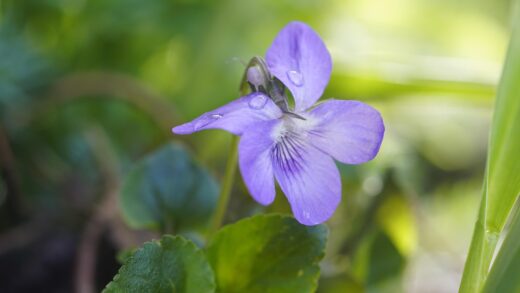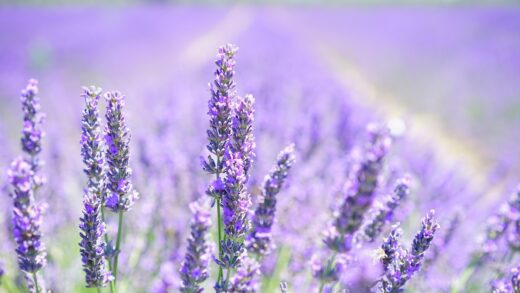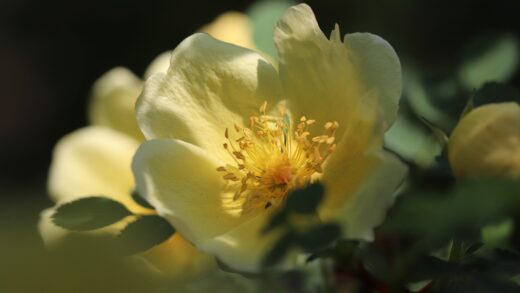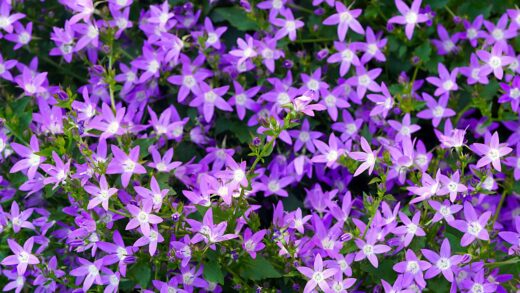The successful establishment of Arum maculatum in the garden begins with a thorough understanding of its planting requirements and propagation methods. This unique woodland plant, known for its distinctive hooded flower and vibrant red berries, requires a specific set of conditions to thrive, closely mirroring its native forest floor habitat. Proper site selection, soil preparation, and planting technique are paramount to cultivating a healthy specimen that will naturalize and provide seasonal interest for years. Whether starting with tubers purchased from a nursery or propagating from an existing clump, the process is straightforward if these fundamental principles are followed, ensuring the plant has the best possible start in its new environment.
Before any planting takes place, careful consideration must be given to the location. Cuckoo-pint is an ideal plant for shady areas where other species might fail to flourish. It performs best in partial to deep shade, such as that found beneath the canopy of deciduous trees or on the north-facing side of a wall or building. This mimics the dappled light it receives in its natural woodland setting. Planting in a location with too much direct sun will inevitably lead to scorched leaves and a stressed plant that is unlikely to perform well, so choosing a shaded, sheltered spot is the first and most critical step.
The timing of planting is also a crucial factor for success. The best time to plant the dormant tubers of Arum maculatum is in the late summer or autumn. This allows the tuber sufficient time to establish its root system in the warm soil before winter sets in, preparing it for vigorous growth the following spring. Planting in autumn gives the tuber a head start, ensuring it is ready to send up shoots as soon as conditions are favorable. While spring planting is also possible, it may result in less vigorous growth in the first year.
Finally, a key aspect of planting is recognizing the plant’s toxicity. All parts of Arum maculatum are poisonous due to the presence of calcium oxalate crystals, which can cause severe irritation if handled improperly or ingested. When planting the tubers, it is highly advisable to wear gloves to prevent skin contact. Furthermore, it is essential to choose a planting location away from areas frequented by children or pets, who might be attracted to the plant’s brightly colored but highly toxic berries. This responsible approach to planting ensures the garden remains a safe environment for everyone.
Preparing the ideal soil environment
The foundation for a healthy Arum maculatum plant lies in the soil. This species thrives in a moist, yet well-drained, soil that is rich in organic matter, replicating the humus-laden floor of a deciduous forest. Standard garden soil is often not sufficient on its own and requires amendment to create the ideal growing medium. The goal is to create a soil structure that retains adequate moisture for the roots without becoming waterlogged, as stagnant water is the primary cause of tuber rot, the most significant threat to the plant’s health.
More articles on this topic
The first step in soil preparation is to improve its organic content. Before planting, work a generous amount of well-rotted leaf mold, garden compost, or rotted manure into the top 20-30 centimeters of the soil. This organic matter serves multiple purposes: it provides a slow-release source of essential nutrients, improves the soil’s ability to hold moisture, and enhances its structure and drainage. For heavy clay soils, incorporating horticultural grit or coarse sand can further improve drainage and prevent compaction, creating a looser medium for the tubers to develop.
The ideal soil pH for cuckoo-pint is in the neutral to slightly alkaline range. Most garden soils will fall within an acceptable range, but it is beneficial to test the soil if you suspect it may be highly acidic. If the soil is too acidic, a light application of garden lime can be worked in during preparation to raise the pH level. However, Arum maculatum is quite adaptable and will tolerate a range of soil conditions as long as the drainage and organic content are adequate.
Once the soil has been amended, it should be raked to a fine, crumbly tilth, ready for planting. This preparation not only creates the perfect physical and nutritional environment for the plant but also helps to remove any large stones or weeds that could impede the tuber’s growth. Taking the time to properly prepare the soil before planting is an investment that will pay dividends in the form of a healthy, robust, and long-lasting plant that requires minimal intervention in the future.
The technique of planting tubers
Planting the tubers of Arum maculatum is a simple process, but following the correct technique is vital for successful establishment. The tubers, which are the plant’s underground storage organs, should be handled with care, remembering to wear gloves to protect against skin irritation. Inspect the tubers before planting; they should be firm and healthy, without any signs of rot or damage. Each tuber will have a distinct top and bottom, with the top often showing signs of previous growth or a slight point from which the new shoot will emerge.
More articles on this topic
The correct planting depth is critical for the tuber’s development. A general rule is to plant the tuber at a depth of about two to three times its own height, which typically translates to around 8-15 centimeters deep. Planting too shallowly can leave the tuber vulnerable to frost damage or being disturbed by garden wildlife, while planting too deeply can exhaust the tuber’s energy reserves before the shoot reaches the surface, resulting in weak growth or complete failure to emerge. Dig an individual hole for each tuber to the required depth.
When placing the tuber in the planting hole, ensure it is oriented correctly with the growing point facing upwards. This allows the shoot to grow directly towards the soil surface without expending unnecessary energy. Space the tubers approximately 20-30 centimeters apart from each other. This spacing provides enough room for each plant to develop its full spread of foliage without being overcrowded, while also being close enough to allow them to form a dense, natural-looking clump over a few years.
After placing the tubers in their holes, carefully backfill with the prepared soil, gently firming it down to eliminate any large air pockets. Water the area thoroughly after planting to settle the soil around the tubers and provide initial moisture to encourage root development. Following this, little more is needed until the first shoots appear in spring. This straightforward planting method, when combined with proper site selection and soil preparation, sets the stage for a dramatic and rewarding display.
Propagation through division
One of the most effective and reliable methods for propagating Arum maculatum is through the division of its underground tubers. Over time, a single plant will produce offsets, or smaller daughter tubers, which will gradually form a dense clump. Dividing these clumps not only provides new plants for other parts of the garden but also helps to rejuvenate the original plant, promoting more vigorous growth. This process is best carried out when the plant is dormant, typically in the late summer or early autumn, after the leaves have died back.
To begin the process of division, carefully excavate the entire clump of tubers using a garden fork or spade. It is important to dig well away from the base of the plant to avoid accidentally spearing the tubers. Once the clump is lifted from the ground, gently shake off the excess soil to expose the network of interconnected tubers. You will typically find one or more large parent tubers alongside several smaller offsets that have developed around them.
The next step is to separate the tubers. In many cases, the smaller offsets can be gently broken off from the parent tuber by hand. For larger, more established clumps, a sharp, sterilized knife may be needed to make clean cuts, ensuring that each divided section has at least one healthy tuber with some roots attached. Discard any tubers that show signs of rot, disease, or damage, as these are unlikely to grow well and could introduce pathogens into the soil.
Once the tubers have been divided, they should be replanted as soon as possible to prevent them from drying out. Plant the newly separated tubers in a well-prepared site at the same depth and spacing as you would for new plants. Water them in well to settle the soil and encourage the development of new roots before the onset of winter. Division is a highly successful propagation method that allows gardeners to easily increase their stock of this captivating woodland plant.
Growing from seed
Propagating Arum maculatum from seed is a rewarding, albeit slower, alternative to division. This method allows for the creation of a large number of new plants and can be an interesting project for the patient gardener. The process begins with the collection of seeds from the plant’s vibrant red berries, which ripen in the late summer and autumn. It is essential to wait until the berries are fully ripe and soft to the touch, indicating that the seeds inside are mature. Always wear gloves when handling the berries due to their toxicity.
Once collected, the seeds must be separated from the fleshy pulp of the berry. The pulp contains germination-inhibiting chemicals, so it is crucial to clean the seeds thoroughly. This can be done by mashing the berries in water and then rinsing the mixture through a sieve, leaving behind the clean seeds. After cleaning, the seeds should be sown immediately, as they have a short period of viability and benefit from fresh sowing.
For best results, the seeds should be sown in pots or trays filled with a high-quality, well-draining seed compost. Sow the seeds on the surface of the compost and cover them with a thin layer of horticultural grit or coarse sand. This top layer helps to maintain moisture, suppress weed growth, and protect the seeds. The sown pots should then be placed in a sheltered, shady location outdoors, such as a cold frame, where they will be exposed to the natural winter cold.
Arum maculatum seeds require a period of cold stratification to break their dormancy and trigger germination. By leaving the pots outdoors over winter, they experience the natural temperature fluctuations needed for this process. Germination is often erratic and may not occur until the following spring or even the spring after that. Once the seedlings are large enough to handle, they can be carefully pricked out and potted on individually, and grown on for another year or two before they are robust enough to be planted out in their final garden positions.


















